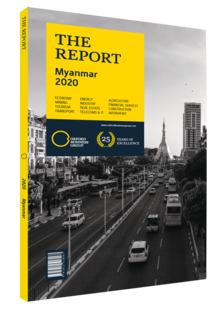Gas resources help to meet domestic energy demand and lower imports in Myanmar
Despite being Myanmar’s most valuable export commodity, there is still an imbalance in the supply and use of gas. The country produces 1.8bn standard cu feet (scf) of natural gas per day, but consumes just 100m scf per day. In addition, there is an extensive network of natural gas pipelines that run through most of the energy demand hubs in the country.
Nonetheless, Myanmar still imports gas, as most of the domestically produced gas is exported to China and Thailand. In 2017 Myanmar exported some 13.44m tonnes of natural gas and earned more than $3bn in revenue. However, as its economy grows, Myanmar could increasingly benefit from using domestic gas for its own consumption, to generate electricity, run cleaner buses, produce fertiliser and supply liquefied petroleum gas (LPG) for cooking, among other uses.
Increasing Domestic Use
There are three possible options for Myanmar to consider in terms of using gas to meet domestic needs. First, increase gas production; second, import liquefied natural gas (LNG); and third, ramp up refining and LNG import capacity. While the first option is already under way, the second has become a priority, with plans to construct three new LNG import terminals in the south of the country. The third, however, may take some time to materialise.
These elements come as LNG demand is forecast to reach 2.1m tonnes per annum by 2030, fuelled mostly by the rising demand for electricity. Gas-fired electricity generation, meanwhile, is expected to increase at an average rate of 3.5% per annum and to hit 12.8 TWh in the next decade. By 2028 LNG is estimated to account for just under 38% of the total power mix.
In 2018 the government approved four gas-to-power projects worth $5.16bn with a combined generation capacity of 3111 MW. Three of these are LNG-fired plants. One of the projects envisioned expanding the capacity of the existing 121-MW gas-fired power plant at Ahlone near Yangon to 356 MW by using a floating storage regasification unit. However, the project ran into difficulties due to safety concerns. TTCL, the Thai-Japanese joint venture which was to invest $321m in the project, said in June 2019 it will need to build an LNG terminal and a 24-km-long underground pipeline to ship the gas to the power plant. Project costs are now estimated at $620. LNG will also need to be shipped to the terminal from tankers that are stationed further away, adding to the operating costs of the project.
Attracting Investment
All three LNG projects are on hold due to the inability of the negotiating parties to conclude a power purchase agreement. The disagreements are primarily over price and currency. While investors want a floating market price for the LNG to be paid in US dollars, the government prefers a fixed price and payment in kyat. Because of these risks, some project sponsors are seeking a sovereign guarantee, but the government is also reluctant to offer this.
With an energy crisis looming, the government announced plans to bring in extra power capacity in time for summer in 2020. In July 2019 it opened a tender for five LNG power projects, which together would bring 1040 MW of much-needed capacity to Yangon. Three of the five projects will rely on imported LNG, which could push up the cost of electricity. Unless the government is willing to subsidise the bill, investors may need to charge as much as $0.20 per KWh – almost double the revised residential tariff (see analysis).
While enjoying some recent success, Myanmar has not attracted the required investment in power-generation recently. At the same time, electricity requirements have grown by 19% per annum over the past five years. Gas-to-power electricity is expensive, and LNG import terminals may require $1.35bn worth of investment. Diverting export gas for domestic use is not easy either, since existing long-term energy contracts are subject to supply obligations and Myanmar would need to seek the consent of its partners. Importing LNG is therefore likely the most realistic and cost-effective option to meet the country’s needs over the medium term.
You have reached the limit of premium articles you can view for free.
Choose from the options below to purchase print or digital editions of our Reports. You can also purchase a website subscription giving you unlimited access to all of our Reports online for 12 months.
If you have already purchased this Report or have a website subscription, please login to continue.

